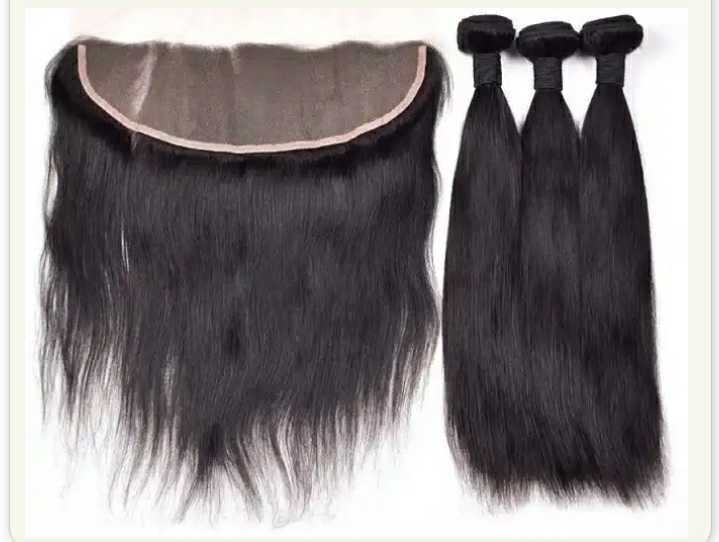Fake Human Hair Tops Nigeria’s N1.4trn Import From China
China’s woven material, ladies’ suits, fake hairs and different items worth N1.4 trillion ($1.95 billion) had been ferried to Nigerian ports in April 2023 as numerous interventions with the aid of using the authorities to restore the sick nearby fabric enterprise have failed.
Findings with the aid of using New Telegraph found out that only $150 million items have been exported to China from Nigeria, leading to a bad exchange deficit of $ 1.95 billion out of the $ 2.1 billion exchange recorded in April among the 2 countries.
Top imports from China to Nigeria are artificial filament yarn woven material worth $160 million; pesticides, $ 84.1 million; non-knit girls’ suits, $81.five million; telephones, $67.2 million and faux hair, $59 million. It became learnt that not one of the fabric business enterprises has begun manufacturing because Central Bank of Nigeria (CBN) intervention.
The apex financial institution had already complained that Nigeria misplaced over N1.sixty five trillion to the smuggling of fabric items annually, main to the crumble of over a hundred thirty firms.
According to the General Administration of Customs of the People’s Republic, the imports to Nigeria from the country have been in particular from Guangdong Province, $544 million; Zhejiang Province,$452 million; Shandong Province,$242 million;
Hunan Province, $180 million and Jiangsu Province, $138 million, at the same time Nigeria’s export locations to China have been especially to Fujian Province, $45.1 million; Beijing, $42.5 million; Zhejiang Province, $12.7 million; Guangdong Province, $10.7 million and Shanghai Province, $7.63 million.
During the period, GACC mentioned that the pinnacle imports of China from Nigeria have been petroleum gas, $95.8 million; crude petroleum, $71.5 million;
niobium, tantalum, vanadium and zirconium ore, $13.5 million; zinc ore, 13.1 million and uncooked aluminium, $12.6 million. Also, between April 2022 and April 2023, the exports from China to Nigeria extended via way of means of $409 million or 24.3 in keeping with cent from $1.69 billion to $2.1billion, whilst imports multiplied via way of means of $57.4 million or 62.3 per cent from $92.1 million to $150 million.
Also, the boom in China’s 12 months with the aid of using-yr exports to Nigeria has been merchandise which includes pesticides, $56 million or 199 consistent with cent, artificial filament yarn woven cloth, $37.9 million or 31 in keeping with cent and mild artificial cotton fabrics, $34.three million or 1.46 according to cent.
It could be recalled a few fabric cloths worth N63.6 billion ($132.51 million) had been dumped into the Nigerian marketplace in 2020.
The imported materials, which encompass wool and woven fabrics, had been shipped to the country from China.
Also, the International Trade Statistic on Nigerian imports found out $ forty-five million in wool and woven material had been introduced to the country in 2015, $29.8 million in fabric in 2016, whilst the country took shipping in 2017, $22.12 million in; 2018, $12.three million and 2019, $23.sixteen million.
Worried about the inflow of smuggled fabric into the country, the Director General of the Nigerian Textile Employers Association of Nigeria (NTEAN), Mr Kwa- jaffa Hamma lamented that not one of the moribund fabric industries was revived because of 2017.
It become learnt that the CBN had invested over N120 billion throughout the Cotton, Textile and Garment (CTG) fee chain because of the inception of its intervention programme withinside the enterprise with over 320,000 farmers financed between 2018 and 2020.
The apex financial institution had stated that via way of means 2020 output for seed, cotton might be over 300,000 metric tonnes to decorate the manufacturing capability of the ginneries in generating over 102,000 metric tonnes of cotton lint, which have to meet and surpass the cotton lint requirement of the fabric enterprise withinside the country.
However, the director popular cited stakeholders withinside the fabric and garment industries have been already concerned that authorities became setting extra cash into cotton manufacturing than the moribund fabric industries they have been speculated to revive.
According to him, authoriauthorities’ention became alleged to be pinnacle-down and now no longer bottom-pinnacle as presently implemented.



